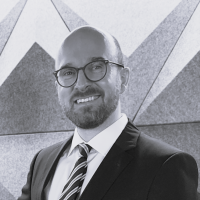Renewing the Empire: A Family Firm's Succession and Refit Journey

While the global business environment is forever changing, family firms often stand for longevity and stability -- and stable, long-term management is a key strategic element in their performance recipe (Miller & Le Breton-Miller, 2005). Despite their strengths, all family firms face one Achilles’ heel that can threaten their survival: the succession process.
Succession is an inevitable challenge for the firm, the family, and for those at the helm. Research indicates that only 30% of family firms survive past their founders’ generation (Ahrens, 2020; Istipliler et al., 2023). Finding a successor who can effectively carry forward the business, the family’s entrepreneurial aspirations, and their culture and values is crucial. It is essential to find someone capable of handling the "rollercoaster of change" that comes with succession and embracing it as an opportunity for growth and development. It is not just a business experience; it is a family adventure.
Introduction
In a typical family business succession scenario, the founder has led the firm for several decades and a succession to the next generation is on the horizon. While epically long leadership tenure is a well-known characteristic of family businesses (Gomez-Mejia et al., 2003; McConaughy, 2000; Stalk & Foley, 2012; Zona, 2016), most leaders slowly become more ineffective after the prime of their career. As a result, they may tackle current challenges based on solutions that worked well in the past, but are a “second best” solution in the present. This can evoke inertia in the organization. Therefore, when a new generation assumes leadership, there is often an untapped potential for improvement, a chance to move from “second best” to “first best” solutions.
This happens only if the successor is ready for the CEO role, and capable of recognizing this potential and introducing and pushing through the relevant changes. Learning and accepting new realities, and moving away from old ways of doing business that may even be related to family tradition, is tough but necessary when the firm’s practices are no longer compatible with a changed environment.
It’s clear that succession in the family firm is a unique opportunity for the firm’s renewal and rejuvenation, setting the stage for success in the future. Successors have the opportunity to re-evaluate the fit between the organization and its environment, then identify areas of productive and adaptive changes and make them happen. This transition requires family members to gradually relinquish old roles and evolve into new ones. Handler (1990) asserts that successful transitions call for a process of mutual role adjustment, as the current generation heading the business may shift from being a "sole operator," to a "monarch," then to an "overseer/delegator," and finally to a "consultant.” At the same time, the next generation of family members shifts from having “no role” to “helper” to “manager” to “leader/chief decision maker.” Researchers have found that having a board, council or other governance mechanism formalizes the succession process and helps new generations of leaders improve communication, address family issues, and contribute to effective problem-solving. (Brenes et al., 2011).
While change during the succession process may be uncomfortable, research also highlights that it is normal and even important for the family firm’s longevity. Families should understand and appreciate that the environment around their firm may be different from the perceptions of their longtime leaders and respect that successors will need to do the tough work of taking stock and introducing change.
Three factors make change especially necessary when the successor takes over.
1. Dusty Thrones: Stale in the Saddle
Research has found that long tenure may result in a lack of innovation, reduced competitiveness, and missed growth opportunities for the firm. CEOs may fail to realize the need to change with their environment as they become “stale” like a cowboy on a long ride in the West (Miller, 1991).
2. The Inertia of our Skillset and the Pace of Change in the Global Economy
In some circumstances, the leaders may not be able to adapt their attributes as rapidly as the circumstances change. A founder may have a growth mindset and skillset, but when facing a severe and prolonged recession, the firm may actually need a turnaround specialist at the helm, someone who can thrive in changing environments.
For all kinds of firms, a well-skilled CEO will make strategic decisions that ultimately help the organization adjust to its environment and position itself for the future, leading to better performance (Cannella et al., 2008). In companies that are not family firms, a mismatch of the CEOs’ skillset and attributes is a typical reason for replacing the CEO, which typically happens in intervals of six years. Family firms often don’t do this, which may decrease the organization's fit with the environment, especially when the leader has served for a long time.
3. The Shadow of Success: The Icarus Paradox
It is a general rule: The more light you have, the more intense the shadows. In this vein, the “Icarus Paradox” (Miller, 1992) happens when successful leaders, such as long tenured family firm founders, become enchanted and trapped in their past achievements, and as a consequence fail to properly realize the current challenges of the organization-environment fit. Success is often the very seed of failure.
All three of the above factors are more or less present in a family firm setting, and often a leader passing the torch to the next generation may not even perceive how the organization is out of touch with the environment. The major changes that come next (Miller, 1991) may be productive and enhance performance. Indeed, findings confirm an astonishingly high amount of change during succession in family firms. This does not mean that the firm is necessarily experiencing losses; rather, it means it could be performing even better! However, to achieve that, to “refit” organization and environment, requires a “fit” concerning the CEO successor.
The New CEO Must Be Up to the Task
Revitalizing an outdated organization requires recognizing and identifying the mismatch between the organization and its environment, and designing and implementing suitable refit actions. These measures realign the firm with current challenges and boost performance in the post-succession period (Istipliler et al., 2023).
Picking a successor with strong CEO-related human capital (leadership, industry, and experience, etc.) is crucial. The successor needs to be cognitively and emotionally ready to identify and execute the right changes without damaging what the firm stands for or the social capital developed by the relationships with its stakeholders: family, employees, and community. New CEOs with strong human capital can kick-start and encourage restructuring actions and rejuvenate the firm during succession, setting the stage for the sustainability of the firm in the next generation.
Balancing Change and Social Capital
CEO-related human capital can enable restructuring but also be the key to preserving the valuable elements of firm culture in the post-turnover period (Istipliler et al., 2023). The challenge is to introduce rejuvenating changes during the succession process without damaging the firm’s core and culture and preserving its social capital—those relationships that are crucial to its success. The right human capital and managerial attitudes of the CEO successor are essential for this (Chrisman et al., 1998; Le Breton-Miller & Miller, 2015): It is important that the successor is carefully selected, as the predecessor will no longer be in a position to execute the needed changes.
Paying Attention to Culture and Values
CEO successors in family firms must consider maintaining family values (Le Breton-Miller & Miller, 2015; Miller & Le Breton-Miller, 2005), such as social capital, stability, cultural emphasis, and family values while driving the necessary refit actions for the firms. Preserving social capital, stability, and family values helps to maintain consistency within the social structure as well as trust and harmony within the firm, and lays the basis for the long-term management of the next generation (Istipliler et al., 2023).
An Inconvenient Truth: Change Often Requires New Leaders
The family firm setting is often geared for continuity, loyalty, stability, and management for the long-run, all of which make change difficult. It may take a change in leadership to make it happen. Next generation family members who point out improvement potentials should not be dismissed. It may be at odds with the older generation’s prior decisions, but it is important to recognize: This is an important catalytic process, and it is especially tough for next-gens who are breaking from family traditions and sometimes the policies of their parents. Successors executing this should be valued and celebrated rather than discouraged. Not all changes will bear fruit, but such is the nature of entrepreneurial mindset that the family should preserve.
Conclusion
In many family firms, a suboptimal organization-environment fit has occurred upon succession. The change that frequently occurs during family firm succession is thus likely productive. Yet, preserving social capital, stability, and family values remain important during the change process, as these distinctive characteristics not only define the firm, but also contribute significantly to its ongoing success. This tightrope walk can be achieved, if the incoming CEO has strong human capital. While the task is challenging for successors, they can reactivate, rejuvenate, and renew the family’s empire for future generations of management.
References
Ahrens, J. (2020). The succession question and the family firm: A theoretical, conceptual, and historical reflection. The Entrepreneurship SIG at the European Academy of Management: New Horizons with Strong Traditions, 2, 109–139.
Barker, V. L., III, & Duhaime, I. M. (1997). Strategic change in the turnaround process: Theory and empirical evidence. Strategic Management Journal, 18(1), 13–38.
Brenes, E. R., Madrigal, K., & Requena, B. (2011). Corporate governance and family business performance. Journal of Business Research, 64(3), 280-285.
Cannella, B., Finkelstein, S., & Hambrick, D. C. (2008). Strategic Leadership: Theory and Research on Executives, Top Management Teams, and Boards. Oxford University Press.
Chirico, F., & Nordqvist, M. (2010). Dynamic capabilities and trans-generational value creation in family firms: The role of organizational culture. International Small Business Journal, 28 (5), 487–504.
Chrisman, J. J., Chua, J. H., & Sharma, P. (1998). Important attributes of successors in family businesses: An exploratory study. Family Business Review, 11(1), 35–47.
Gomez-Mejia, L. R., Larraza-Kintana, M., & Makri, M. (2003). The determinants of executive compensation in family-controlled public corporations. Academy of Management Journal, 46(2), 226–237.
Grinyer, P. H., & Spender, J.‑C. (1979). Recipes, crises, and adaptation in mature businesses. International Studies of Management & Organization, 9(3), 113–133.
Handler, W. (1990), “Succession in family firms: a mutual role adjustment between entrepreneur and next-generation family members”, Entrepreneurship Theory and Practice, 15(1), 37-51.
Hofer, C. W. (1980). Turnaround strategies. The Journal of Business Strategy, 1(1), 19–31. https://doi.org/10.1108/eb038886
Istipliler, B., Ahrens, J. P., Hauer, A., Steininger, D. M., & Woywode, M. (2023). Heroes of the Green Room–How Able Successors Revitalize and Reinvent Family Firms. Journal of Small Business Management, tba.
Le Breton-Miller, I., & Miller, D. (2015). Learning stewardship in family firms: For family, by family, across the life cycle. Academy of Management Learning & Education, 14(3), 386–399.
McConaughy, D. L. (2000). Family CEOs vs. nonfamily CEOs in the family-controlled firm: An examination of the level and sensitivity of pay to performance. Family Business Review, 13 (2), 121–131.
Miller, D. (1991). Stale in the saddle: CEO tenure and the match between organization and environment. Management Science, 37(1), 34–52. https://doi.org/10.1287/mnsc.37.1.34
Miller, D. (1992). The Icarus paradox: How exceptional companies bring about their own downfall. Business Horizons, 35(1), 24-35.
Miller, D., & Le Breton-Miller, I. (2005). Managing for the long run: Lessons in competitive Advantage from Great Family Businesses. Harvard Business School Press.
Tushman, M. L., & Romanelli, E. (1985). Organizational evolution: A metamorphosis model of convergence and reorientation. Research in Organizational Behavior, 7, 171–222.
Stalk, G., & Foley, H. (2012). Avoid the traps that can destroy family businesses. Harvard Business Review, 90(1/2), 25–27.
Zona, F. (2016). CEO leadership and board decision processes in family-controlled firms: Comparing family and non-family CEOs. Small Business Economics, 47(3), 735–753. https://doi.org/10.1007/s11187-016-9764-3


Master Student / Business Administration / Istanbul Ticaret University / Mannheim University
View Profile






